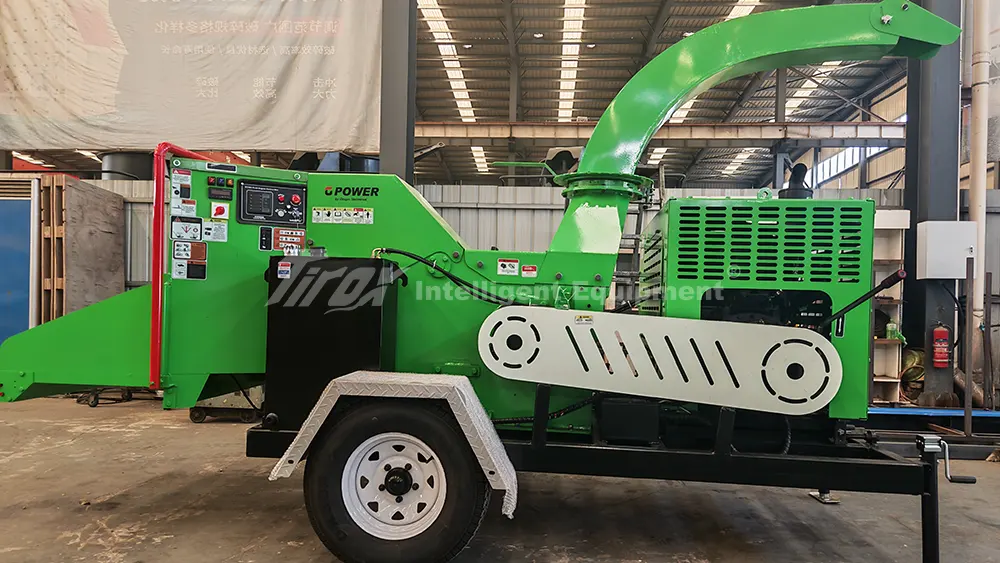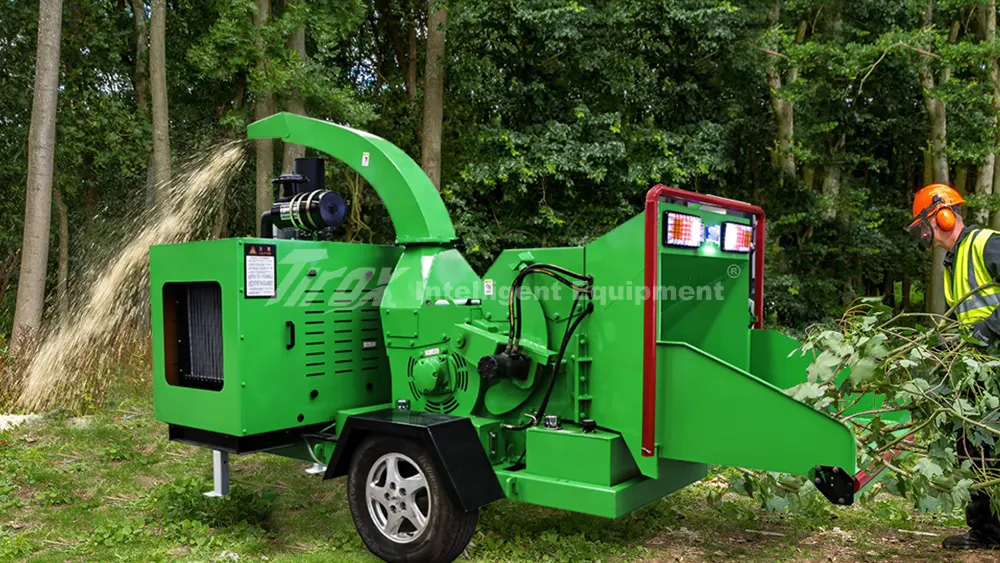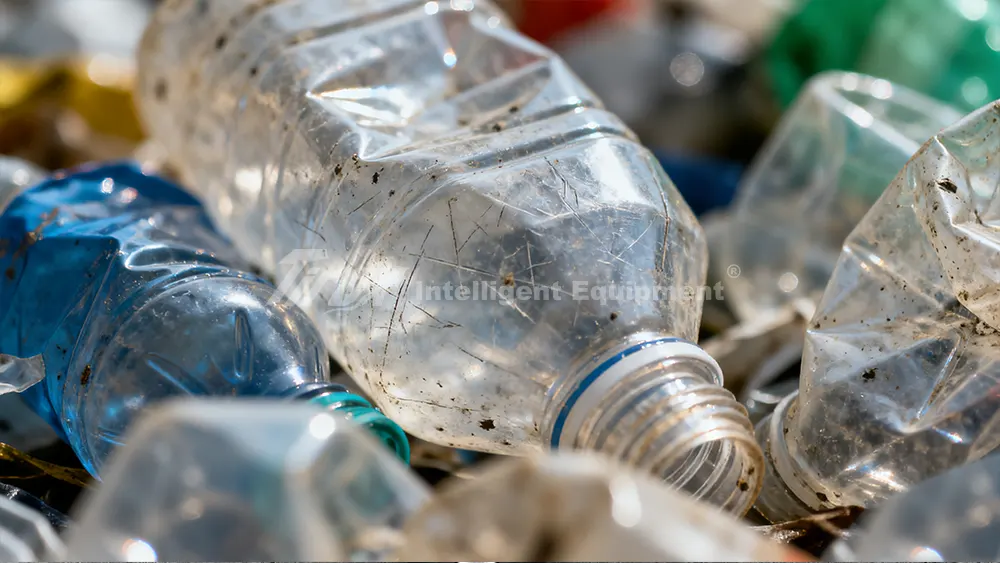You might have old clothes or fabric scraps piling up, and you are wondering if your wood chipper could quickly clear them out [7]. This seems like it could be a fast solution.
No, you generally cannot, and should not, shred clothing or fabric in a standard wood chipper [8]. Wood chippers are designed only for woody materials. Fabric can wrap around moving parts, cause severe clogs, damage the machine, and create safety hazards [8].
In my 20 years of working with wood chippers at TIROX, I have seen many people try to put the wrong materials into these powerful machines. It is a common mistake to think that because a chipper can shred tough wood, it can handle anything else [10]. But every machine is designed for a specific purpose. Wood chippers use sharp knives or blades to slice wood into small chips [8]. They are not made for soft, flexible materials like fabric, which behave very differently inside the machine [8][10]. Trying to chip clothing can lead to costly repairs and even put you in danger [10].
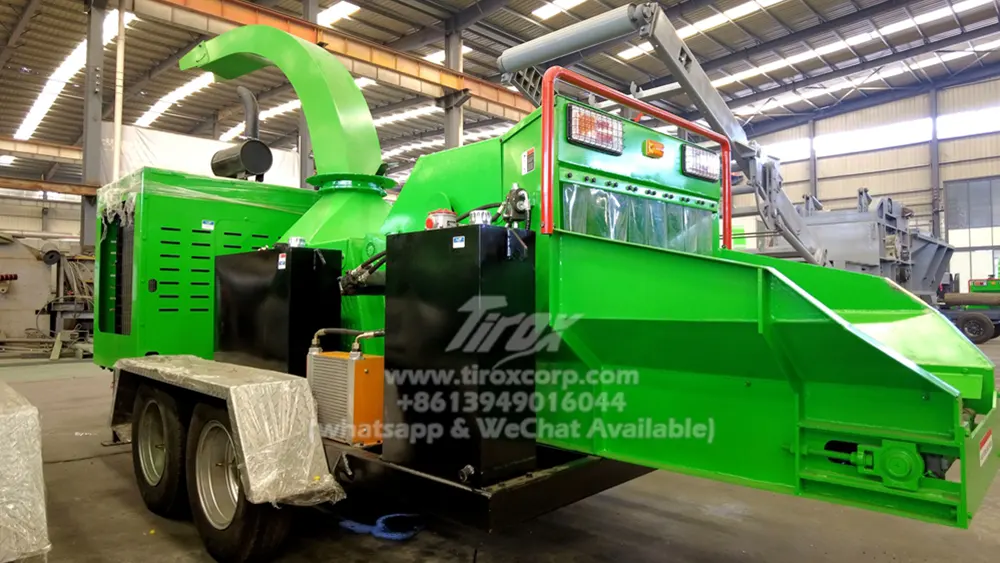
Will a wood chipper shred material?
You might be thinking about putting various non-wood materials into your chipper, assuming its strength can handle anything. This can be a dangerous assumption [10].
A standard wood chipper is specifically designed to shred woody materials like branches and logs, not just any general material [8][10]. Putting unsuitable items like fabric, metal, plastic, or rubber into a wood chipper can lead to severe damage to the machine and create safety risks for the operator [8][10].
From my experience, wood chippers are built to cut organic fibers found in wood [10]. The blades are sharp and strong, but they are specialized [10]. When you put materials not meant for the chipper into it, they can cause a lot of problems [8][10]. For example, fabric can easily wrap around the cutting drum or blades, causing a severe clog that is difficult to clear [8]. This can also put strain on the engine and other moving parts, leading to breakdowns [8]. Metal objects, even small ones like nails, are extremely dangerous because they can break the blades, turning them into high-speed projectiles [10]. Plastic might melt from the friction heat inside the machine, gumming up the works, or shatter into sharp pieces [10]. Glass is even worse, as it can create dangerous shards [10]. It is crucial to respect the machine’s design intent to keep it working well and to keep yourself safe [10].
Materials a Wood Chipper Can and Cannot Handle
| Material Type | Chipper Suitability | Why / What Happens |
|---|---|---|
| Branches & Logs | Good [8] | Chippers are designed for these woody, fibrous materials [8]. |
| Woody Biomass | Good [10] | This includes clean wood that is not contaminated [10]. |
| Fabric / Clothing | No [8] | Wraps around moving parts, causes clogs, damages components [8]. |
| Metal | No [10] | Can break blades, turn into dangerous projectiles, severe damage [10]. |
| Stone / Rocks | No [10] | Dulls blades quickly, can break blades or anvil, expensive repairs [10]. |
| Plastic | No [10] | Does not chip cleanly, can melt and gum up internals, or shatter [10]. |
| Glass / Rubber | No [10] | Very dangerous, can shatter and create sharp projectiles, damages blades [10]. |
| High Humidity Mud / Wet Waste | No [15] | Can easily clog the feeding system and internal components [15]. |
Stick to clean, woody material to ensure your chipper operates safely and efficiently for a long time [10].
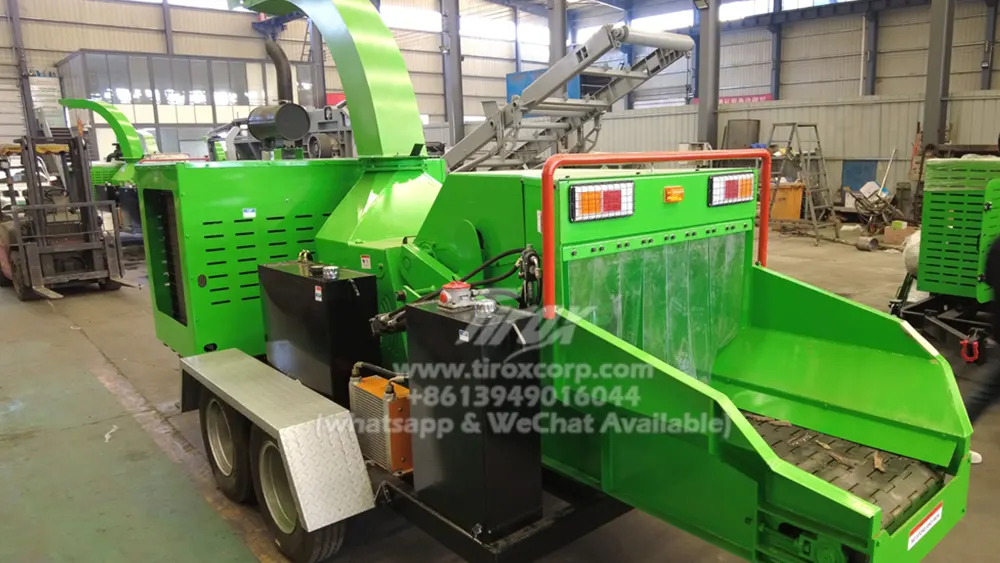
Will a wood chipper shred leaves?
You have a yard full of fallen leaves, and your wood chipper is nearby [12]. You might wonder if it can easily turn those leaves into mulch [12].
While a wood chipper can handle some leaves mixed with branches, it is generally not ideal for large piles of leaves, especially wet ones [9]. Leaves, especially when wet, can compact and clog the chipper, reducing its efficiency and potentially causing problems [9]. A shredder is usually a better tool for leaves [9].
Based on my experience, wood chippers are built to slice rigid, woody material [8]. Leaves are soft and flexible. When you feed a large amount of leaves into a chipper, especially wet leaves, they tend to mat together [9]. This can quickly clog the internal mechanisms, making the machine less effective or even stopping it entirely [9]. My colleagues and I often explain to customers that using the right machine for leaves will save them a lot of frustration and keep their wood chipper running well for its intended purpose: chipping wood [9]. If your main concern is leaves, a shredder, which uses blunt hammers or flails to pulverize softer materials, is a much better choice [8][9].
Leaf Handling Suitability
| Material | Wood Chipper Suitability | Why | Alternative Machine |
|---|---|---|---|
| Branches with leaves | Good (if ratio is right) [9] | Branches help pull leaves through the machine [9]. | Chipper |
| Small amount of dry leaves (mixed) | Okay | Less likely to clog than wet leaves [9]. | Shredder (better) |
| Large piles of leaves | Poor [9] | Risk of compacting, clogging, and matting [9]. | Shredder (best) |
| Wet leaves | Very Poor [9] | High risk of severe clogging and machine slowdown [9]. | Shredder (best) |
If leaves are your primary material, investing in a machine designed for softer waste will save you time and trouble [9].
Will a wood chipper shred plastic?
You might have plastic waste mixed in with your wood debris and wonder if your chipper can handle it. This is a common question, but also a critical one for machine safety [10].
No, a standard wood chipper should not be used to shred plastic [10]. Plastic does not chip cleanly; some types can melt from the friction heat inside the machine, gumming up the internal workings, while others can shatter into sharp, hard-to-clean pieces [10]. This can severely damage the machine [10].
In manufacturing these machines for decades, I have seen the damage caused by putting plastic into a wood chipper [10]. Our chippers are designed with sharp blades that slice wood [8]. Plastic behaves very differently when subjected to these forces [10]. When plastic goes into the chipper, it does not cut; it tears or heats up [10]. If it melts, it can quickly coat the blades and internal components, leading to major clogs and machine inefficiency [10]. Clearing melted plastic from a chipper is a very difficult and time-consuming job that often requires disassembling parts of the machine. If the plastic shatters, the sharp pieces can damage the blades or other parts, similar to what happens with metal or glass [10]. This is why we always emphasize that wood chippers are purpose-built for clean wood and woody biomass only [10].
Reasons to Avoid Plastic in a Wood Chipper
| Problem Category | Description | Impact |
|---|---|---|
| Clogging | Plastic does not shred into small, uniform pieces like wood; it can tear, melt, or form clumps that block the chipper’s flow [10]. | Reduces machine efficiency, causes downtime, and can lead to mechanical strain and damage [10]. |
| Damage to Components | Frictional heat can melt plastic, which then adheres to blades, drums, and internal surfaces. Hard plastics can shatter, damaging blades or other parts [10]. | Requires costly cleaning or replacement of damaged components [10]. |
| Safety Hazards | Shattering plastic can create sharp projectiles [10]. Overheating due to melted plastic can also be a fire risk. | Risk of injury to the operator and bystanders. |
| Contamination | Plastic can contaminate the resulting wood chips, making them unsuitable for biomass fuel, mulch, or other uses [10]. | Degrades the quality and usability of your output material. |
Always check your material for non-wood items, especially plastic, before feeding it into your chipper [10].
Conclusion
A wood chipper is specifically designed for woody materials. Never put clothing, fabric, general non-wood materials, large piles of leaves, or plastic into a wood chipper, as this can cause clogs, damage, and safety risks.


